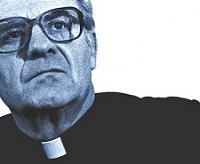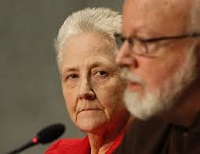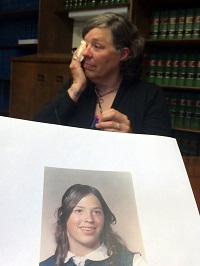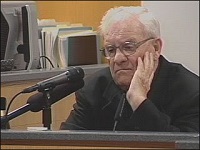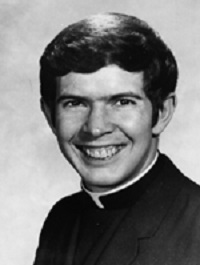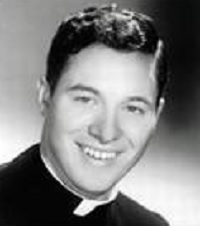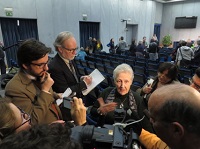By Terence McKiernan Hamilton and Griffin on Rights June 15, 2015 http://hamilton-griffin.com/ In the children's rights community, and especially among Catholics, the big news this past week was the decision by Pope Francis to create a new tribunal in Rome, which will try bishops who have covered up child abuse or have enabled the perpetrators. The Pope's fast action on a recommendation from his Pontifical Commission for the Protection of Minors – instantaneous by Vatican standards – was a vindication for the Commission, its leaders Cardinal Seán O'Malley and Rev. Robert W. Oliver, and the two highly respected survivors who serve on it, Marie Collins and Peter Saunders. Pope Francis must now get his new tribunal up to speed very quickly, if it is to cope with the situation in Australia (where a powerful Royal Commission is investigating the role of Pope Francis's financial czar, Cardinal George Pell, in several abuse cases). The Pope's speedy removal of Archbishop John C. Nienstedt and Auxiliary Bishop Lee A. Piché is yet another sign that he considers the tribunal's work of the utmost importance. Those actions by civil authorities are a reminder that change has been forced on the Catholic church by survivors willing to come forward, by prosecutors and inquiries able to investigate, and by civil suits that have made public many thousands of pages of evidence. Courage and persistence have now compelled the creation of the new Vatican tribunal, and we will see whether it brings the necessary zeal and transparency to its own work. In a crucial development, Archbishop Eamon Martin of Armagh, the leader of the Catholic church in Ireland, told reporters after a meeting of the Irish bishops that "justice is indeed retrospective" and that he supports the tribunal's working on past as well as present and future cases [see transcript with video]. Marie Collins, one of the survivors on the Pontifical Commission, subsequently confirmed that this was the case, raising the possibility that Cardinal Seán Brady, Cardinal Bernard Law, and Cardinal Roger Mahony could soon be experiencing the tender mercies of the tribunal. While all of this has been unfolding, I've been reading the new biography of Archbishop Raymond G. Hunthausen of Seattle, A Still and Quiet Conscience: The Archbishop Who Challenged a Pope, a President, and a Church, by John A. McCoy (Orbis Books, 2015). As a reporter, McCoy covered the archdiocese, and then he worked as Hunthausen's PR person during the final years in Seattle. The Hunthausen story as McCoy tells it is quite relevant to the tribunal's retrospective task. Hunthausen is the last surviving American bishop to have participated in the Second Vatican Council. He was the bishop of Helena MT for thirteen years (1962–1975) and archbishop of Seattle for sixteen years (1975–1991), retiring early at age 70 after an epic battle with Pope John Paul II, who was unhappy about Hunthausen's anti-nuclear activism, his tax protest, his advocating for Vatican II–inspired reform, or his support of gay Catholics, or perhaps all of the above. Conspicuous by its absence from that list of causes championed by Hunthausen is child safety. Yet in Helena and Seattle, many of Hunthausen's priests were molesting children, and a good amount of his time was spent managing those cases. His biographer's near-silence about child abuse (fewer than four not very forthright pages out of 330) inadvertently teaches us valuable lessons for the tribunal's work. Archbishop Hunthausen's situation raises many questions. Chief among them, perhaps, is what to do with retrospective overload. Somehow it must be recognized that nearly every bishop, including Hunthausen and men like him, transferred abusive priests and acted in other ways that harmed children. How can this appalling fact be explained without explaining it away, and how can the culture, as well as individual bishops, be held accountable and then reformed? 1) The Last Shall Be First – The Catholic abuse crisis is fundamentally about children who have been raped and silenced, and yet even our efforts to mitigate the catastrophe can sometimes marginalize the victims and hurt them again. McCoy repurposes the story of abusive priest James McGreal's last parish assignment, which was a story of three remarkable survivors coming together to protect children: Jeanne Miller, founder of the Linkup, Adele Doran, and Maryalyce Ebert, the sister and victim of one of McGreal's many victims. The story is poignantly told in Jason Berry's Lead Us Not into Temptation, excerpted here. In McCoy's retelling, the survivors' names are removed, the remarkable confluence of Chicago and Seattle activism vanishes, and Hunthausen's complexity is simplified. He's no longer the archbishop who can innovate but not apologize, whom we meet in Berry's portrait. Newspaper reports from the time, including Hunthausen's letter to parishioners, further complicate the picture: 1 2 3 4 5 6 7 8 9. 2) Scale and Involvement – In his biography, McCoy misrepresents the working life of his subject and his detailed involvement in the Seattle abuse crisis. Most of the accused Seattle priests who have been identified publicly were active during Hunthausen's tenure, and he was intimately involved in their cases. The case of Fr. Michael Cody was one of the first that Hunthausen dealt with when he arrived in Seattle in 1975, and he was very hands-on. Personnel Board minutes say he reported on four priest cases, including two involving treatment. A month later, the archbishop arranged for Cody to live in a parish during his therapy, although archdiocesan files show Cody admitted to molesting "at least eight girls twelve years of age or younger." Hunthausen even corresponded with Cody's new pastor, thanking him for "this kindness and charity toward one of our brother priests." 3) Religious Orders – A bishop provides faculties for religious order priests to function within a diocese's territory. Many order priests have staffed parishes and diocesan schools, and some order priests have abused children. Hunthausen's extensive involvement in religious order abuse cases is shown, for example, in this exchange between Hunthausen and Abbot Brendan Downey regarding Benedictine Fidelis Forrester, accused of abusing a boy in a Seattle parish. McCoy's biography has no mention of this case. 4) Catholic Distraction – For a time in the late 1980s, Hunthausen's battle with Pope John Paul II was all-consuming. Yet in the Vatican's complaints about the situation in Seattle, and in Hunthausen's responses (see an example), the fundamental concern of child safety was ignored. We see the same gap in the Synod and the World Meeting of Families. Of all the issues that could be discussed at those events, child protection is the most important, and yet it is invisible on the programs. 5) Policy Fascination – McCoy credits Hunthausen with developing an archdiocesan abuse policy in the late 1980s that was the "gold standard" for subsequent policies, such as Bernardin's. The gold standard on the whole topic is Nicholas Cafardi's Before Dallas, where this possibility is not broached. But Bernardin is a fascinating figure in the Hunthausen biography, and it seems quite possible that his dealmaking in Hunthausen's feud with the Vatican might have found further expression in the policies crafted in Chicago and Seattle. However, as we have seen in Philadelphia, Kansas City, and St. Paul and Minneapolis, having a policy is one thing; abiding by it is another. 6) Truth – Relationships among bishops are significant. In Hunthausen's life, his most important friend among the bishops was Bernard J. Topel of Spokane. Topel was Hunthausen's spiritual director in Helena and the force behind Hunthausen's decision to become a priest. When Hunthausen became Seattle's archbishop, his old friend and mentor became his suffragan bishop. In the late 1970s, Topel sent a priest he knew was an abuser, Rev. Patrick G. O'Donnell, to Seattle for treatment. O'Donnell abused boys at the Seattle parish where he lived, and when those abuses came before the court, Hunthausen and others claimed that Topel had not informed him that O'Donnell was a perpetrator. The Very Rev. Michael G. Ryan, a senior official of the Seattle archdiocese and a friend of the archbishop, loyally says: "Archbishop Hunthausen is constitutionally incapable of misrepresenting the truth." Fr. Thomas Doyle's detailed analysis, in a declaration on behalf of an O'Donnell victim, reaches a different conclusion. During trial testimony in 2009, Hunthausen conceded that no therapist ever directly told him it was OK to put a child molester back into ministry with children. McCoy's biography has no mention of this case. 7) Remembering – A priest's funeral is an important event in the life of a diocese, and significant priests are sometimes honored in other ways – a stained glass window will be dedicated, or a building might even be named after them. When the priest is an abuser, these memorials are painful for victims and harmful to the community. For this reason, dioceses have adopted policies to limit remembrance that might be hurtful to others. Seattle has such a policy, based on the USCCB's Charter for the Protection of Children, but it wasn't followed when David Jaeger, an admitted molester of eight to ten boys, was given an elaborate concelebrated funeral at St. Joseph's, where the pastor is Fr. John Whitney, S.J. During the sexual abuse bankruptcy proceedings of the Jesuits' Oregon Province, Whitney was the provincial. Few priests have his familiarity with survivor experience in the institutional church. That he allowed a lavish funeral for someone with Jaeger's history is therefore especially hard to understand. One reason might be that Jaeger was a close associate of Hunthausen and of Ryan, the pastor of St. James Cathedral and a concelebrant of the funeral Mass. I am impressed that the Commission proposed a bishop-accountability tribunal, and I’m surprised that the G-9 and the Pope approved it. Now I hope that Pope Francis appoints a tough customer to lead it – someone who can deal aggressively with individual bishops (including the retrospective cases) as well as the culture that enables them, and who truly cares about the survivors.
.
|
.
Any original material on these pages is copyright © BishopAccountability.org 2004. Reproduce freely with attribution.
